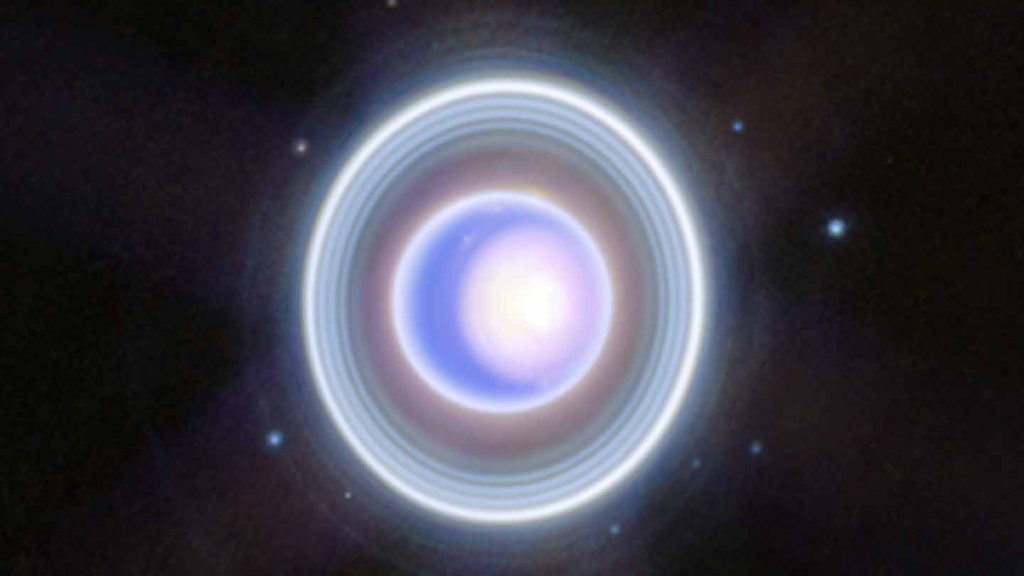Researchers have discovered that the strange observations made by the Voyager 2 spacecraft during its flyby of Uranus in 1986 may have been due to bad timing. A solar wind event that occurred just days before the flyby compressed Uranus’ magnetosphere, leading to several mysteries surrounding the planet and its moons. The findings, published in Nature Astronomy, suggest that Uranus was in an unusual state during the flyby, only occurring approximately 4 percent of the time. This realization sheds new light on our understanding of Uranus and its magnetosphere.
Voyager 2’s observations of Uranus revealed a magnetosphere that appeared to lack plasma, a common component of other planets’ magnetospheres. Additionally, the planet exhibited intense belts of energetic electrons, which puzzled scientists at the time. Upon closer inspection of data collected by Voyager 2 prior to the flyby, researchers found that the density and speed of the solar wind had increased steadily for days leading up to the event. This increase in solar wind pressure would have compressed Uranus’ magnetosphere, resulting in the observed anomalies.
The compression of Uranus’ magnetosphere caused by the solar wind would have altered the extent of the magnetosphere, shrinking it from an estimated 28 times the planet’s diameter to around 17 times within a week. This compression explains the lack of plasma and the presence of intense radiation belts observed by Voyager 2. The researchers suggest that much of what was previously known about Uranus’ magnetosphere may not accurately represent its typical state, highlighting the importance of considering external factors when analyzing planetary data.
The team’s findings have implications for future missions to explore Uranus and its moons. The discovery that Uranus’ magnetosphere may be smaller than previously thought could make it easier for spacecraft to search for subsurface oceans on moons such as Titania and Oberon. These moons could harbor oceans beneath their icy surfaces, which can be detected by spacecraft through their interactions with the magnetic field of the planet. By understanding the true nature of Uranus’ magnetosphere, scientists can better plan future missions to study the planet and its intriguing moons.
Overall, the research provides valuable insights into the dynamic nature of Uranus’ magnetosphere and how external factors can impact our observations of planetary conditions. By reassessing data from past spacecraft missions and considering the effects of solar wind events, scientists are able to refine their understanding of Uranus and make informed decisions about future exploration missions. The findings open up new possibilities for studying the outer planets of our solar system and uncovering the mysteries that lie within these distant worlds.


